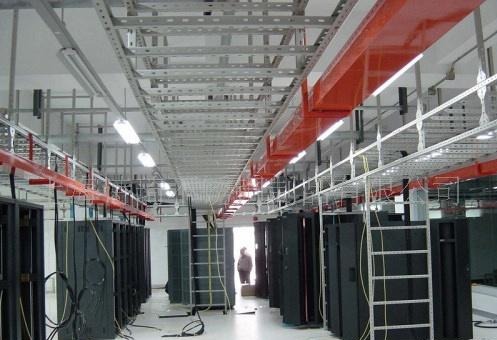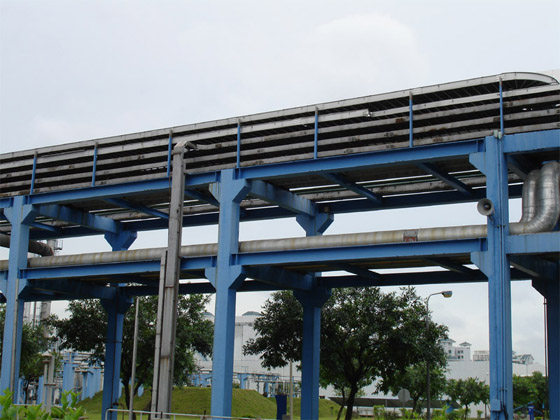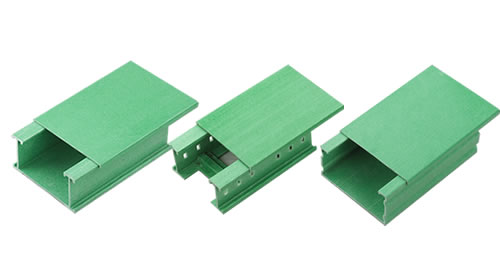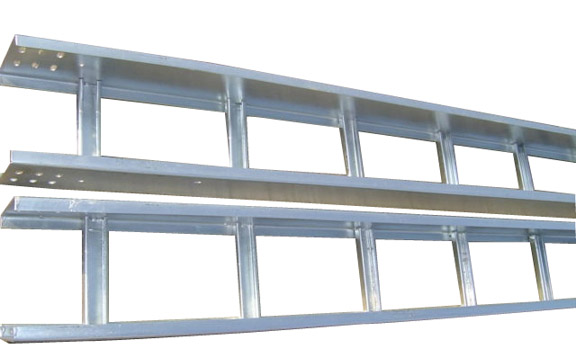濟南電纜橋架與線槽有什么不一樣的地方?
橋架是電工工程中用于標準化敷設電纜的基礎設施,主要功能包括保護線纜、規整走線以及固定于墻面或天花板。根據結構差異,橋架可分為槽式、托盤式、階梯式、大跨度、網格式、組合式及帶隔墻等多種類型,滿足不同場景的承載需求。
Cable tray is a basic infrastructure used for standardized cable laying in electrical engineering. Its main functions include protecting cables, organizing wiring, and fixing them to walls or ceilings. According to structural differences, cable trays can be divided into various types such as trough type, tray type, stepped type, large-span, mesh type, combination type, and with partition walls, to meet the load-bearing requirements of different scenarios.
與之功能相似的線槽,則更專注于電源線、數據線等導線的分類敷設與防護。常見的線槽類型包括絕緣線槽、分隔線槽、迷你線槽、環形線槽、蓋板式線槽等,材質涵蓋金屬與塑料,適用于室內裝修、弱電系統等精細化布線場景。
Cable trays with similar functions are more focused on the classification, laying, and protection of wires such as power lines and data lines. Common types of cable trays include insulated cable trays, partitioned cable trays, mini cable trays, circular cable trays, and cover type cable trays. The materials used include metal and plastic, and are suitable for fine wiring scenarios such as indoor decoration and weak current systems.

盡管橋架與金屬線槽外觀相似,但二者存在顯著差異:
Although the appearance of cable trays and metal trunking is similar, there are significant differences between the two:
尺寸標準:橋架寬度通常超過200mm,適用于大直徑電纜;金屬線槽寬度多小于200mm,專為導線設計。
Size standard: The width of the cable tray usually exceeds 200mm and is suitable for large-diameter cables; The width of metal trunking is mostly less than 200mm, designed specifically for wires.
結構特性:橋架多為開放式(如梯形、網格狀),材質可選鋁合金、鍍鋅鋼板等;金屬線槽則以封閉式熱軋鋼板結構為主。
Structural characteristics: Bridge frames are mostly open (such as trapezoidal or grid shaped), and materials such as aluminum alloy and galvanized steel plate can be selected; The metal trunking mainly adopts a closed hot-rolled steel plate structure.
工程規范:橋架敷設需計算荷載、撓度及填充率,而線槽需符合《民用建筑電氣設計規范》的封閉性與接地要求。
Engineering specifications: The installation of cable trays requires calculation of load, deflection, and filling rate, while cable trays must comply with the enclosure and grounding requirements of the "Code for Electrical Design of Civil Buildings".
實際應用中,二者可協同工作——例如從橋架分支配電柜時,常通過金屬線槽過渡。選型時需根據電纜規模、環境需求及標準綜合考量,以確保布線系統的可靠性與經濟性。
In practical applications, the two can work together - for example, when branching from a bridge to a distribution cabinet, they are often transitioned through metal wire trays. When selecting, it is necessary to comprehensively consider the cable size, environmental requirements, and safety standards to ensure the reliability and economy of the wiring system.
本文由濟南電纜橋架友情奉獻.更多有關的知識請點擊:http://www.euup.cn真誠的態度.為您提供為的服務.更多有關的知識我們將會陸續向大家奉獻.敬請期待.
This article is a friendly contribution from Jinan Cable Bridge For more information, please click: http://www.euup.cn Sincere attitude To provide you with comprehensive services We will gradually contribute more relevant knowledge to everyone Coming soon.









